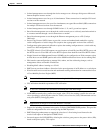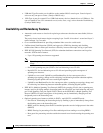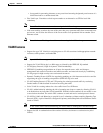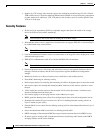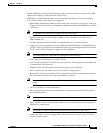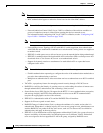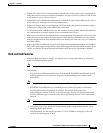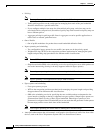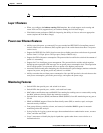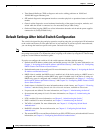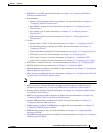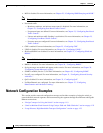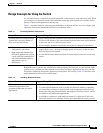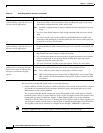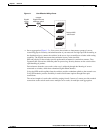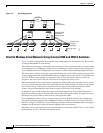
1-15
Catalyst 2960 and 2960-S Switch Software Configuration Guide
OL-8603-09
Chapter 1 Overview
Features
Note To use Auto-QoS enhancements, the switch must be running the LAN Base image.
Layer 3 Features
• When you configure the lanbase-routing SDM template, the switch supports static routing and
router ACLs on SVIs (supported only on switches running the LAN base image).
• IPv6 default router preference (DRP) for improving the ability of a host to select an appropriate
router (requires the LAN Base image)
Power over Ethernet Features
• Ability to provide power to connected Cisco pre-standard and IEEE 802.3af-compliant powered
devices from Power over Ethernet (PoE)-capable ports if the switch detects that there is no power
on the circuit.
• Support for IEEE 802.3at, (PoE+) that increases the available power that can be drawn by powered
devices from 15.4 W per port to 30 W per port (Catalyst 2960-S only)
• Support for CDP with power consumption. The powered device notifies the switch of the amount of
power it is consuming.
• Support for Cisco intelligent power management. The powered device and the switch negotiate
through power-negotiation CDP messages for an agreed power-consumption level. The negotiation
allows a high-power Cisco powered device to operate at its highest power mode.
• Automatic detection and power budgeting; the switch maintains a power budget, monitors and tracks
requests for power, and grants power only when it is available.
• Ability to monitor the real-time power consumption. On a per-PoE port basis, the switch senses the
total power consumption, polices the power usage, and reports the power usage.
Monitoring Features
• Switch LEDs that provide port- and switch-level status
• Switch LEDs that provide port-, switch-, and stack-level status
• MAC address notification traps and RADIUS accounting for tracking users on a network by storing
the MAC addresses that the switch has learned or removed
• Switched Port Analyzer (SPAN) and Remote SPAN (RSPAN) for traffic monitoring on any port or
VLAN
• SPAN and RSPAN support of Intrusion Detection Systems (IDS) to monitor, repel, and report
network security violations
• Four groups (history, statistics, alarms, and events) of embedded RMON agents for network
monitoring and traffic analysis
• Syslog facility for logging system messages about authentication or authorization errors, resource
issues, and time-out events
• Layer 2 traceroute to identify the physical path that a packet takes from a source device to a
destination device



